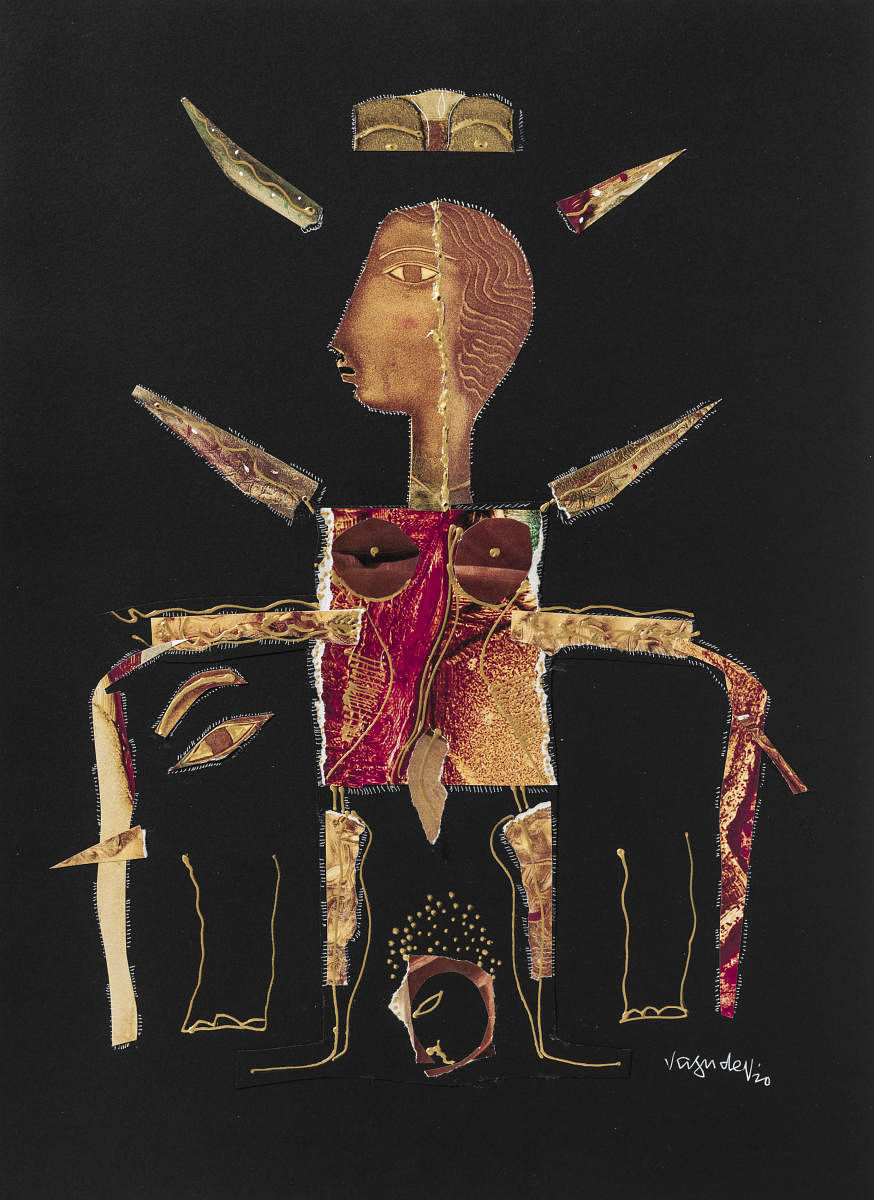

S G Vasudev’s most recent works have been on exhibition at Gallery Sumukha. A series of collages titled ‘Montage of Memories’, these startling, often stark pieces, were produced during the pandemic in a burst of creative and playful experimentation. Titled Dancer, Man Animal, Tree, Rhapsody, Magician, they are intriguing — somehow whimsical and serious at the same time.
In a chat with DHoS, the renowned artist talks about his extended fascination with the Tree of Life and his continued effort to understand and represent the human condition in the way he knows best; about how he coped with the unsettling year that went by; about rigour and discipline; and about everything that continues to inspire him. Excerpts from an interview:
The Tree of Life has been an important motif in your art for decades, almost like it haunts you. Can you explain your fascination with it and how it has evolved for you?
Coming to the Tree of Life was purely accidental. As I was doing symbolic landscapes in the early 70s, the tree in my fantasy landscape took centrestage. A friend of mine who saw it, asked me whether it is Tree of Life. Then I studied the importance of Tree of Life through various books. What I noticed was that I was thinking like the artists and craftsmen who created the Tree of Life in their arts and how it is significant for different religions. Then I studied its importance in Indian philosophy and called my works ‘Vriksha’. The theme also helped me overcome technical problems and led me to create a number of works.
You have spoken about about how you stumbled upon the collage as a medium during the pandemic. Can you say something about the importance of serendipity in your life as an artist?
I did very little painting in the last year, mainly did drawings. And while I was doing drawings, I found an invitation card, which had some interesting designs. The idea of sticking some of those designs in drawings came to me. It led to collage-making. It reminded me that I had done some very successful collages in 1978, but had not pursued it. The idea of tearing pages from various glossy magazines and sticking the torn forms on to my drawing sheets began to take shape. At one point of time, I thought of using my own painting images from my catalogues and books. The result is that I did nearly 60 works, which satisfied me. The whole process was very exciting as I found a new unexplored avenue.
There is a striking juxtaposition of lines and textures in the collages. Could you elaborate on how your imagination of life and the human form took place in this compelling mixed media landscape?
Life and human form have always found its place in my earlier paintings and drawings also. It took a different route this time in the shape of collages. Generally collages are abstract as many artists tear, cut and stick, and don’t use their drawing skills. This is exactly what I have resisted in my collages, not letting my drawings go away. They form as integral part of these works.
The interconnectedness between various forms of art, and collaboration, have been a vital part of your expression and creative endeavour. How has the isolating experience of the pandemic impacted this? Are there other artists, writers or poets whose work has moved or stimulated you during this time?
I miss working with my weaver with whom I create tapestries. I miss working with my craftsmen with whom I create copper reliefs. That said, one works on painting and drawing in isolation. What I missed was my social life, meeting other artists, writers and others. I compensated by using YouTube. Viewed many interviews, watched music, dance, theatre, cinema and arts, which normally I would not be doing. It is another world, perhaps it helped me to work in a different way and think in a different way. No particular artist, writer or poet has stimulated me.
You came to your profession through an education in fine arts, and being part of a community of artists was also a significant part of your journey. How important is this training and sense of community in building artistic practice?
One studies in art schools to learn skills. One moves around in the school to see various art students work. This is a learning process. When one lives in a community of artists, one understands the way of life. Ego does not come into the picture. Community living has helped me to organise various art activities with the help of various generation of artists and others.
How do you structure your creative time? How much of the art takes place in your head before you approach a blank canvas?
I work almost every day. I am in my studio for almost eight hours a day, doing art works, listening to good music, reading. For me, a blank drawing sheet or a blank canvas invites me to explore. I do not have preconceived ideas about work.
How do you stay inspired?
My inspiration is from various sources — by reacting to music, dance, poetry and the arts that are produced by various artists. I make it a point to visit as many exhibitions as possible. Something somewhere could get into one’s system.